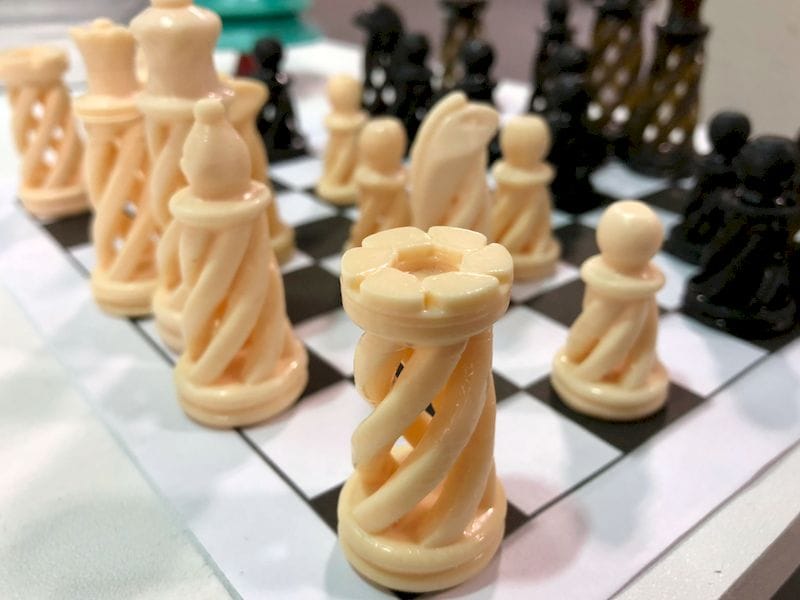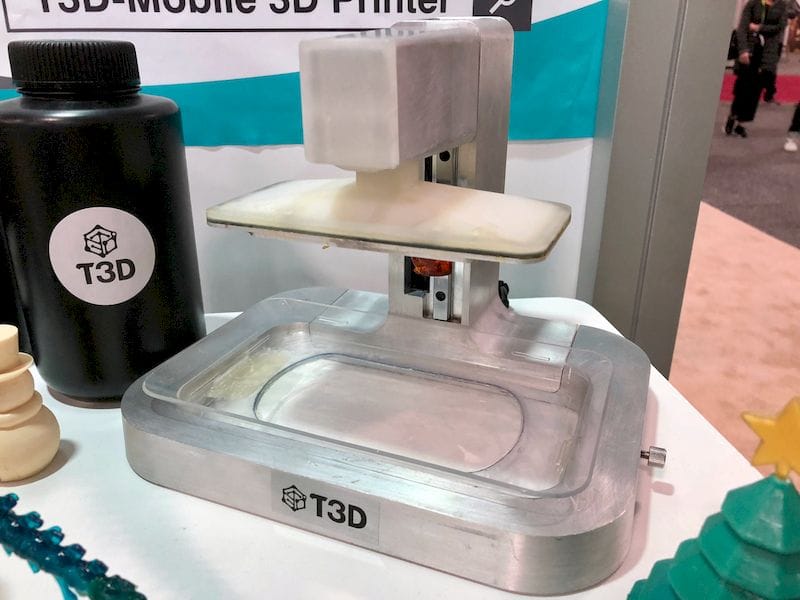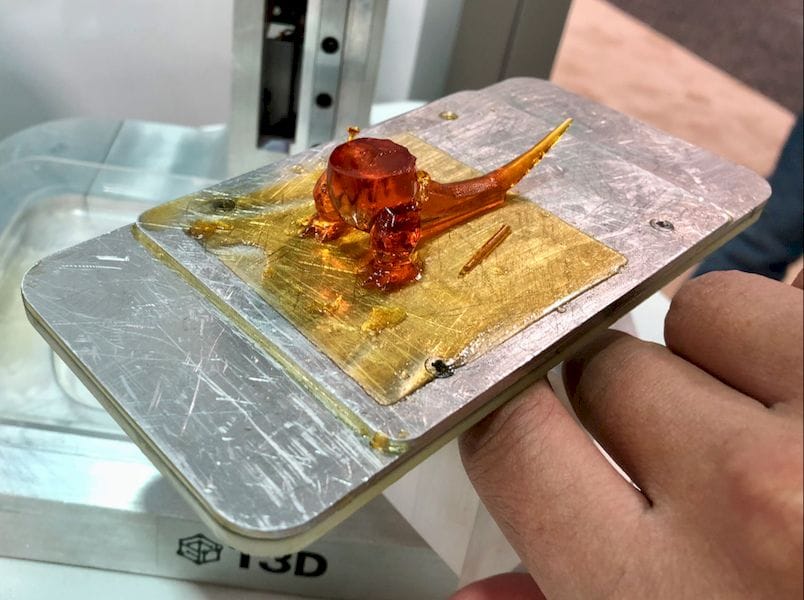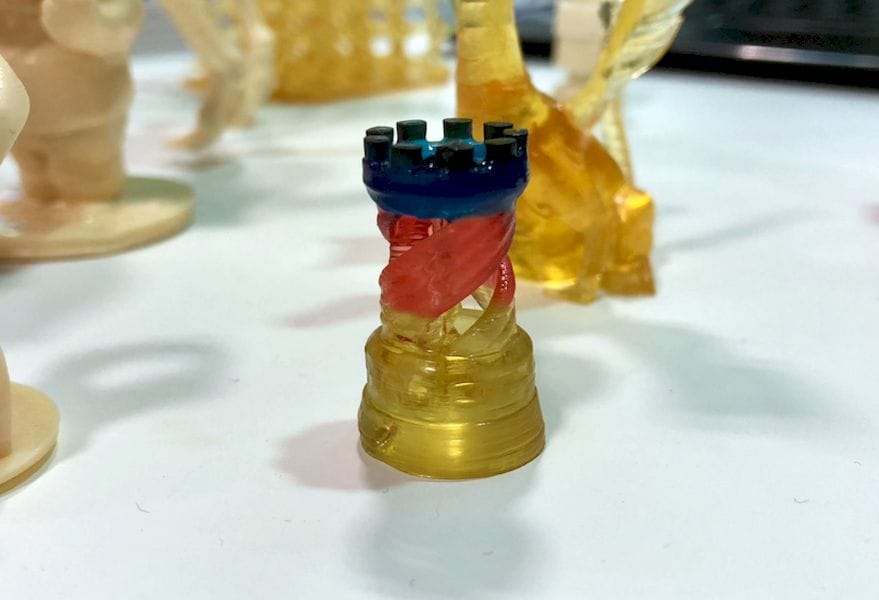
At CES last week, I noticed something interesting at the T3D booth.
If you recall from our previous stories, T3D is a 3D printing startup that produces a clever desktop 3D printer that re-uses your own smartphone as the printing engine.
The T3D mobile desktop 3D printer uses a resin process to create solid objects. Photopolymer resin is selectively exposed to light which causes the liquid to solidify. In other 3D printers using this process, you’ll find lasers, DLP projectors or LCD panels used as the source of this selective light illumination.

T3D’s machine has none of these, as it simply uses a standard smartphone as the light engine in a manner similar to those 3D printers that use an LCD panel for illumination. The smartphone is inserted into the machine and T3D’s app will cause the screen to display layers of the 3D model during printing operations.
This is a very cool approach, and it certainly lowers the cost of the 3D printer – as no light engine is required. But until last week, we had not seen the device in person.

That changed at CES, where T3D was exhibiting in a rather small booth in the startup area. Their machine was unchanged from our previous reports, but I noticed something quite intriguing: the quality of the prints was extremely good.

Check out the images in this story; they are all quite amazing. I wondered how such a straightforward machine could accomplish this, and then realized what must be happening: the XY resolution of the T3D is dependent on the resolution of the smartphone being used. And many of them have very high resolutions, such as Apple’s “Retina” displays.
Typical DLP projection-based systems focus 1920×1080 pixels onto the liquid resin surface, but an iPhone X has an incredible 2436 x 1125 pixels on its display, which, if used in the T3D system, would result in prints of corresponding resolution.
It’s ironic that one of the lowest priced desktop 3D printers might have one of the highest resolutions.
Via T3D

